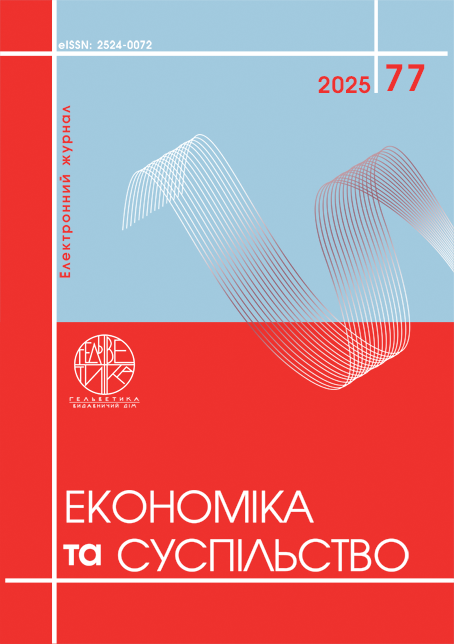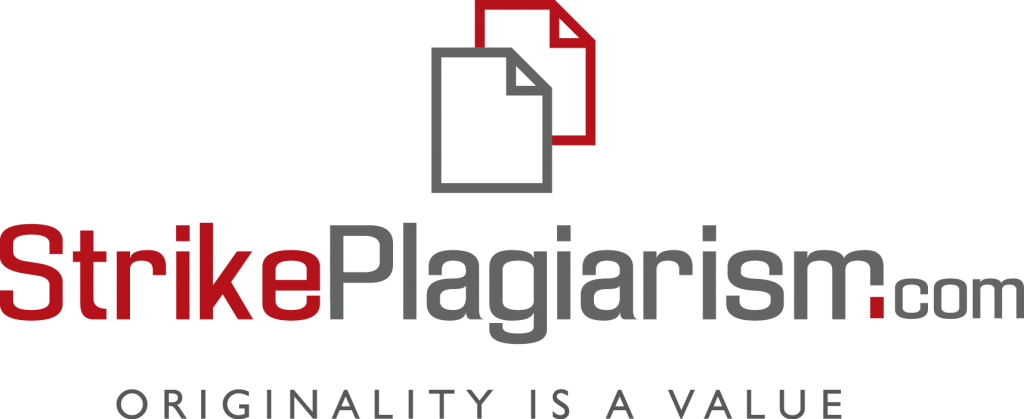КОНЦЕПТУАЛЬНІ ЗАСАДИ УПРАВЛІННЯ ТРУДОВИМ ПОТЕНЦІАЛОМ ПІДПРИЄМСТВА В УМОВАХ НЕВИЗНАЧЕНОСТІ
Анотація
Метою дослідження є обґрунтування концептуальних засад управління трудовим потенціалом підприємства в умовах невизначеності. Предметом дослідження виступають теоретико-методичні підходи та наявні організаційні механізми формування, розвитку й ефективного використання трудового потенціалу. У роботі систематизовано існуючі концептуальні підходи та сформовано на їх основі гібридно-адаптивну концепцію управління трудовим потенціалом, що поєднує ресурсно-орієнтовані, компетентнісні, людиноцентричні, інноваційні та цифрові принципи управління. Результати дослідження демонструють, що інтеграція гнучких моделей та цифрових інструментів підвищує адаптивність і стійкість підприємства. Обґрунтовано необхідність комплексного підходу до управління трудовим потенціалом з урахуванням стратегічних цілей розвитку підприємства і динамічних змін внутрішнього та зовнішнього середовища в умовах невизначеності.
Посилання
Wernerfelt B. A Resource‐Based View of the Firm. Strategic Management Journal, 1984. 5(2), Р. 171-180.
Barney J. Firm Resources and Sustained Competitive Advantage. Journal of Management, 1991, 17(1), Р. 99–120.
Wright P., Dunford B., Snell S. Human Resources and the Resource-Based View of the Firm. Journal of Management, 2001, 27(6), Р. 701–721.
Grant R. M.. Toward a knowledge-based theory of the firm. Strategic Management Journal, 1996. 17, Winter Special Issue, Р. 109–122.
Armstrong M. Armstrong’s Handbook of Strategic Human Resource Management. London, New York, New Dalhi: CPI Group (UK) Ltd, 2020, 801 р. URL: https://ebook.app.hcu.edu.gh/wp-content/uploads/2023/08/Michael-Armstrong-Stephen-Taylor-Armstrongs-Handbook-of-Human-Resource-Management-Practice-Kogan-Page-2020.pdf
Boyatzis, R.E. (1982). The Competent Manager. A Model for Effective Performance. New York: John Wiley & Sons, 300 p.
Spencer L., Spencer S. Competence at Work: Models for Superior Performance. New York: John Wiley and Sons LTD, 1993, 384 p.
Maslow A. H. A Theory of Human Motivation. Psychological Review, 50(4) Psychological Review, 1943. 50, P. 370-396.
McGregor, D. (1960). The Human Side of Enterprise. Bombay- New Dalhi TATA McGraw-Hill Compani, 1960. 240 p.
Rogers, C. On Becoming a Person: A Therapist’s View of Psychotherapy., Boston: Houghton Mifflin, 1961, 420 р.
Barrett, R. The Values-Driven Organization: Unleashing Human Potential for Performance and Profit. Routledge, 2010. 96 р.
2023 Global Human Capital Trends. Deloitte. 2023. URL: https://www.deloitte.com/us/en/insights/topics/talent/human-capital-trends/2023.html
Miles, R.E., Snow, C.C. Organizations: New Concepts for New Forms. California Management Review. 1986. Volume 28, Issue 3. Р. 62–73. DOI: https://doi.org/10.2307/41165
World Economic Forum, 2023. Future of Jobs Report. URL: https://www3.weforum.org/docs/WEF_Future_of_Jobs_2023.pdf
Teece, D.J., Pisano, G., Shuen, A. (1997). Dynamic Capabilities and Strategic Management. Strategic Management Journal, 18(7), 509–533. https://sms.onlinelibrary.wiley.com/doi/abs/10.1002/%28SICI%291097-0266%28199708%2918%3A7%3C509%3A%3AAID-SMJ882%3E3.0.CO%3B2-Z
North D.C. Institutions, Institutional Change and Economic Performance. Cambridge University Press. 1990. p. 33. DOI: https://doi.org/10.1017/CBO9780511808678
Soskice, D. & Hall, P.A. Varieties of Capitalism: The Institutional Foundations of Comparative Advantage. Academy of Management Review. 2001. 28(3) January. DOI: https://doi.org/10.2307/30040740
Work for a brighter future – Global Commission on the Future of Work. International Labour Organization, Geneva: ILO, 2019. URL: https://www.ioe-emp.org/index.php?eID=dumpFile&t=f&f=135117&token=775ce5c1b6c0f880bee999d32b07312264a46ab7
Adizes, I.. Managing Corporate Lifecycles. Published by Prentice Hall Pr. 1999, 468 р.
Hurst, D. K. Crisis & Renewal: Meeting the Challenge of Organizational Change. Harvard Business School Press. 1995, 229 р.
Argyris, C., Schön, D.A. Organizational Learning: A Theory of Action Perspective. Reading, Mass. : Addison-Wesley Pub. Co. 1978, 300 р.
Herzberg, F. Work and the Nature of Man. Cleveland, OH: World Pub. Co. 1966, 203 р.
Ryan, R. M., & Deci, E. L. (2000). Self-determination theory and the facilitation of intrinsic motivation, social development, and well-being. American Psychologist, 55(1), 68–78. DOI: https://doi.org/10.1037/0003-066X.55.1.68
Schein, E. H. Organizational Culture and Leadership (4th ed.). San Francisco, CA: Jossey-Bass, 2010. 467 р.
State of the Global Workplace. Understanding Employees, Informing Leaders. Washington: Gallup, 2023. 98 p.
Report of the Director‑General: Decent Work. ILO. International Labour Conference, 87th Session, Geneva, 1–17 June 1999, 88 p.
Decent Work Indicators: Guidelines for Producers and Users of Statistical and Legal Framework Indicators. ILO, 2013. 257 p.
Working Conditions and Sustainable Work: An Analysis Using the Job Quality Framework. Eurofound. Publications Office of the European Union. 2021. DOI: https://doi.org/10.2806/938302
Ulrich, D., & Dulebohn, J.H. (2015). Are we there yet? What’s next for HR? Human Resource Management Review, 25(2), 188–204. DOI: https://doi.org/10.1016/j.hrmr.2015.01.004
Human Capital Trends 2024 I Raport Deloitte. 2024. URL: https://www.deloitte.com/pl/pl/services/consulting/research/human-capital-trends-2024.html
Ulrich, D., Younger, J., Brockbank, W., & Ulrich, M. HR from the Outside In: Six Competencies for the Future of Human Resources New York: McGraw-Hill Education. 2012. 288 р.
Creating People Advantage: How People Can Drive Transformation. Boston Consulting Group (BCG) & World Federation of People Management Associations (WFPMA). 2021. 100 р. URL: https://www.bcg.com/publications/2021/creating-people-advantage-report
Wernerfelt, B. (1984). A resource‐based view of the firm. Strategic Management Journal, 5(2), 171–180.
Barney, J. (1991). Firm resources and sustained competitive advantage. Journal of Management, 17(1), 99–120.
Wright, P., Dunford, B., & Snell, S. (2001). Human resources and the resource-based view of the firm. Journal of Management, 27(6), 701–721.
Grant, R. M. (1996). Toward a knowledge-based theory of the firm. Strategic Management Journal, 17(Winter Special Issue), 109–122.
Armstrong, M. (2020). Armstrong’s handbook of strategic human resource management. CPI Group (UK) Ltd. URL: https://ebook.app.hcu.edu.gh/wp-content/uploads/2023/08/Michael-Armstrong-Stephen-Taylor-Armstrongs-Handbook-of-Human-Resource-Management-Practice-Kogan-Page-2020.pdf
Boyatzis, R. E. (1982). The competent manager: A model for effective performance. John Wiley & Sons.
Spencer, L., & Spencer, S. (1993). Competence at work: Models for superior performance. John Wiley & Sons. 384 p.
Maslow, A. H. (1943). A theory of human motivation. Psychological Review, 50(4), 370–396.
McGregor, D. (1960). The human side of enterprise. Tata McGraw-Hill Company. 240 p.
Rogers, C. (1961). On becoming a person: A therapist’s view of psychotherapy. Houghton Mifflin. 420 р.
Barrett, R. (2010). The values-driven organization: Unleashing human potential for performance and profit. Routledge. 96 р.
Deloitte. (2023). 2023 global human capital trends. URL: https://www.deloitte.com/us/en/insights/topics/talent/human-capital-trends/2023.html
Miles, R. E., & Snow, C. C. (1986). Organizations: New concepts for new forms. California Management Review, 28(3), 62–73. DOI: https://doi.org/10.2307/4116522
World Economic Forum. (2023). Future of jobs report. URL: https://www3.weforum.org/docs/WEF_Future_of_Jobs_2023.pdf
Teece, D. J., Pisano, G., & Shuen, A. (1997). Dynamic capabilities and strategic management. Strategic Management Journal, 18(7), 509–533. DOI: https://doi.org/10.1002/(SICI)1097-0266(199708)18:7<509::AID-SMJ882>3.0.CO;2-Z
North, D. C. (1990). Institutions, institutional change and economic performance. Cambridge University Press. p. 33. DOI: https://doi.org/10.1017/CBO9780511808678
Soskice, D., & Hall, P. A. (2001). Varieties of capitalism: The institutional foundations of comparative advantage. Academy of Management Review, 28(3). DOI: https://doi.org/10.2307/30040740
International Labour Organization. (2019). Work for a brighter future – Global Commission on the Future of Work. URL: https://www.ioe-emp.org/index.php?eID=dumpFile&t=f&f=135117&token=775ce5c1b6c0f880bee999d32b07312264a46ab7
Adizes, I. (1999). Managing corporate lifecycles. Prentice Hall Press. 468 р.
Hurst, D. K. (1995). Crisis & renewal: Meeting the challenge of organizational change. Harvard Business School Press. 229 р.
Argyris, C., & Schön, D. A. (1978). Organizational learning: A theory of action perspective. Addison-Wesley Publishing Company. 300 р.
Herzberg, F. (1966). Work and the nature of man. World Publishing Company. 203 р.
Ryan, R. M., & Deci, E. L. (2000). Self-determination theory and the facilitation of intrinsic motivation, social development, and well-being. American Psychologist, 55(1), 68–78. DOI: https://doi.org/10.1037/0003-066X.55.1.68
Schein, E. H. (2010). Organizational culture and leadership (4th ed.). Jossey-Bass. 467 р.
Gallup. (2023). State of the global workplace: Understanding employees, informing leaders. Gallup Press. 98 р.
International Labour Organization. (1999). Report of the Director-General: Decent work. International Labour Conference, 87th Session, Geneva. 88 р.
International Labour Organization. (2013). Decent work indicators: Guidelines for producers and users of statistical and legal framework indicators. 257 р.
Eurofound. (2021). Working conditions and sustainable work: An analysis using the job quality framework. Publications Office of the European Union. DOI: https://doi.org/10.2806/938302
Ulrich, D., & Dulebohn, J. H. (2015). Are we there yet? What’s next for HR? Human Resource Management Review, 25(2), 188–204. DOI: https://doi.org/10.1016/j.hrmr.2015.01.004
Deloitte. (2024). Human capital trends 2024. Raport Deloitte. URL: https://www.deloitte.com/pl/pl/services/consulting/research/human-capital-trends-2024.html
Ulrich, D., Younger, J., Brockbank, W., & Ulrich, M. (2012). HR from the outside in: Six competencies for the future of human resources. McGraw-Hill Education. 288 р.
Boston Consulting Group, & World Federation of People Management Associations. (2021). Creating people advantage: How people can drive transformation. URL: https://www.bcg.com/publications/2021/creating-people-advantage-report
Авторське право (c) 2025 Олександр Зеленко, Артем Смаглій

Ця робота ліцензується відповідно до Creative Commons Attribution 4.0 International License.


